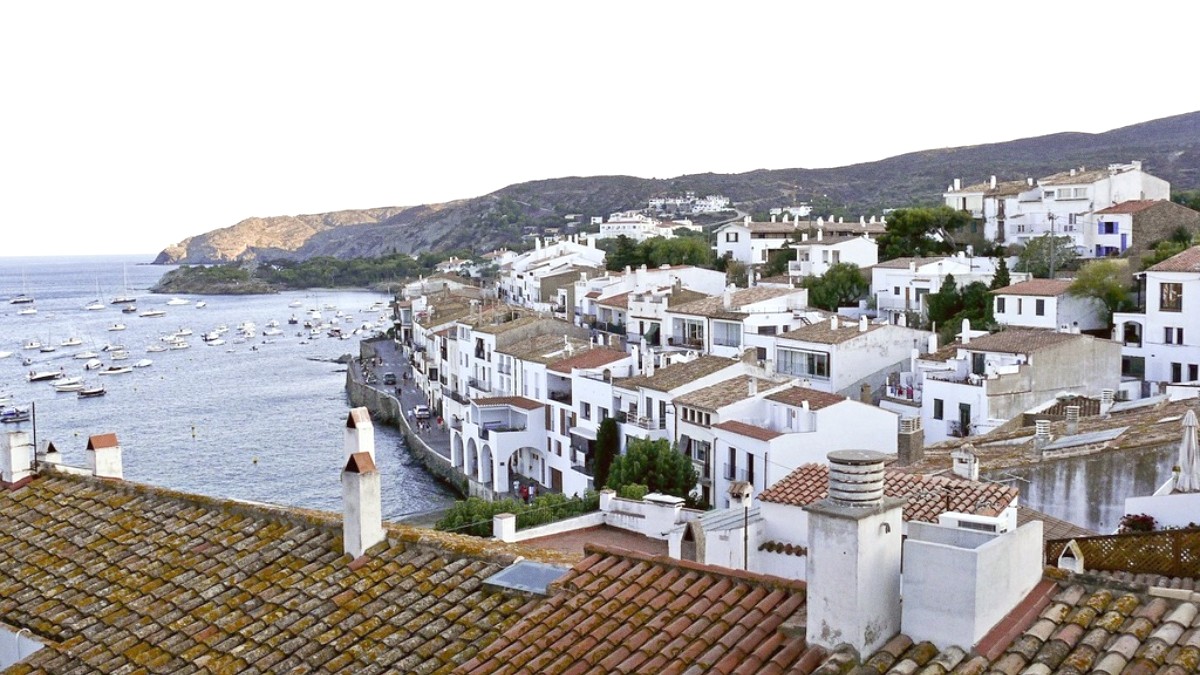
Spain
Cadaqués cuisine draws from Catalan culinary traditions, especially from the Empordà region. This area's diverse landscape combines sea, plains, and mountains, fostering a "mar i muntanya" (sea and mountain) cooking style. Ingredients from the coast (fish, shellfish) meet those from inland areas (meat, vegetables).
As a historic fishing village, fish and shellfish hold a central position in its gastronomic identity. Recipes frequently echo the simple, robust methods of fishermen, making the most of the daily catch. Subtle French influences also appear due to border proximity.
Meals occur later than in many countries. Lunch (dinar) is typically 1:30 PM - 3:30 PM. Dinner (sopar) is late, 8:30 PM - 10:30 PM, sometimes later in summer. Many restaurants close between services.
Tipping is appreciated but not obligatory. Rounding up or leaving 5-10% for good service is a kind gesture. Service charge (IVA) typically includes prices. Bread is often served with a small charge.
Common coffee orders: "café solo" (espresso), "café con leche" (coffee with milk), "cortado" (espresso with milk dash). Reservations are advisable for popular restaurants, especially during high season and dinner, to avoid disappointment.
A traditional fisherman's stew, a local icon. Featuring various local fish, potatoes, sometimes prawns or mussels, cooked in a rich, flavorful broth thickened with ground almonds and saffron.
Find it in traditional seafood restaurants along the waterfront or in the old town.
Literally "black rice," akin to paella. Its distinctive color and flavor arise from squid ink, typically featuring cuttlefish or squid and other seafood. Often served with alioli.
Available at most restaurants serving rice dishes.
Large, succulent red prawns from nearby Palamós, often grilled "a la plancha." Cured anchovies from L'Escala are a regional appetizer, typically with crusty bread and tomato.
A treat to savor for seafood enthusiasts.
Catalonia's crème brûlée, flavored with lemon and cinnamon, with caramelized sugar. Panellets are small, dense almond paste cookies, traditionally eaten around All Saints' Day (Nov 1st).
Light, airy fried doughnuts, often sugar-dusted, popular during Lent and local festivals. Many seafood dishes taste best when their ingredients are in season; sea urchins are a winter delicacy.
Cadaqués typically highlights charming, traditional eateries. However, some restaurants deliver a more refined dining experience.
This is the most common and accessible dining type, balancing quality, atmosphere, and price.
Small bars and cafes present inexpensive breakfast and lunch options.
While Catalan/Mediterranean cuisine dominates, some restaurants may present Italian (pizza/pasta) or other European choices. Do not anticipate a wide array of global cuisines; the focus remains local.
The culinary scene prioritizes authentic regional flavors.
Cadaqués lacks large, modern food halls common in bigger cities. The Mercat Municipal is smaller, focusing on fresh local ingredients.
The town's charm rests in its traditional dining establishments.
Vegetarian choices are growing. Vegan options may need specific requests. "Sin productos de origen animal" (without animal products) is useful.
Awareness for "sin gluten" (gluten-free) and other allergies expands. Communicate needs clearly: "sin lactosa" (lactose-free), "alergia a los frutos secos" (nut allergy).
Halal and kosher options are very limited or non-existent. Travelers with strict religious dietary needs may plan extensive self-catering.
Translation apps clarify dietary needs. Research restaurants in advance using online reviews or specific allergy-friendly guides.
Local festivals (festes majors), especially the main town festival in mid-September, feature traditional food stalls, communal meals, and culinary demonstrations.
Seasonal seafood festivals may take place in Cadaqués or nearby coastal towns.
Dining at a restaurant with stunning sea views, specifically those slightly elevated from the waterfront, creates a memorable experience.
Savoring a simple, fresh seafood meal by the harbor, watching fishing boats, imparts an authentic local feel.
Beyond dining, immerse yourself in the local wine culture. The DO Empordà region crafts exquisite wines, both white, rosé, and red, that complement the local cuisine beautifully.
Partake in the tradition of "merienda," a small afternoon snack. This might be a piece of fruit, a pastry, or a light sandwich, enjoyed after the customary siesta.
Vegetarian options appear more frequently on menus, though perhaps not extensive beyond salads or grilled vegetables. Many traditional tapas are vegetable-based (e.g., "patatas bravas," "pimientos de padrón," "escalivada").
Awareness of gluten-free ("sin gluten") and other allergies expands in Spain. Clearly state your needs: "sin lactosa" (lactose-free), or "alergia a los frutos secos" (nut allergy).
Halal and kosher options are very limited or non-existent in Cadaqués. Travelers with strict religious dietary requirements should plan for extensive self-catering and carry suitable provisions.
For severe allergies, always mention the risk of cross-contamination. While awareness grows, smaller kitchens may pose challenges.
Confirm with staff regarding cooking methods and shared fryers/surfaces.
If uncertain about an ingredient in a dish, do not hesitate to ask. Restaurant staff are generally willing to clarify to ensure your safety and enjoyment.
Menu items with specific allergy symbols are becoming more common.
Embrace the freshness of local produce from the Empordà region. Farmers' markets present seasonal vegetables and fruits.
Many restaurants present outdoor seating. Savor your meal with Cadaqués' unique light and sea breeze.
For an authentic experience, look for restaurants where local families dine. These often serve traditional, hearty meals.